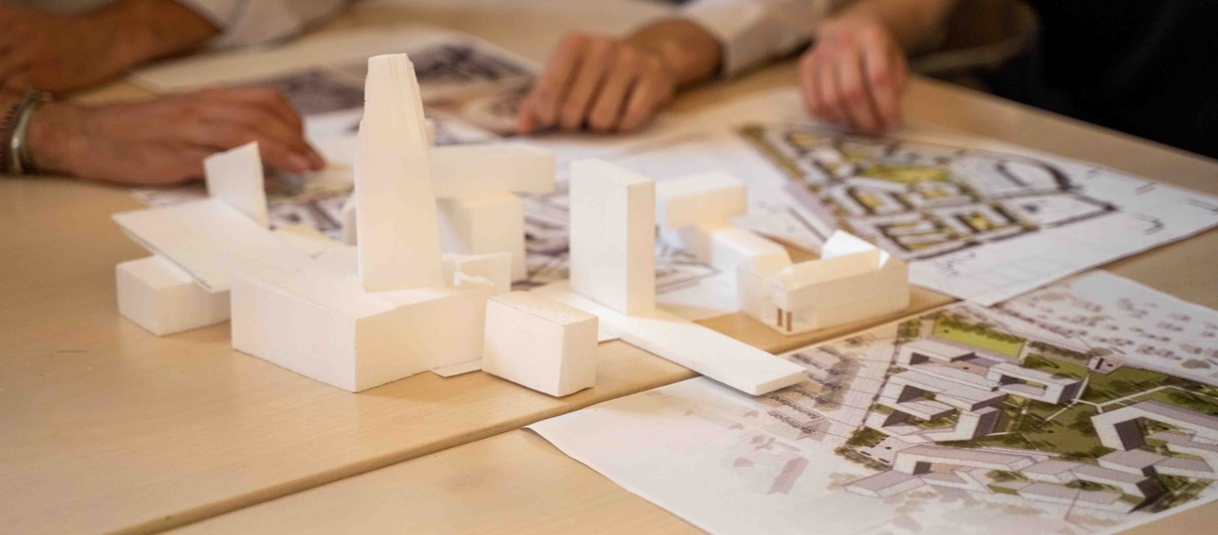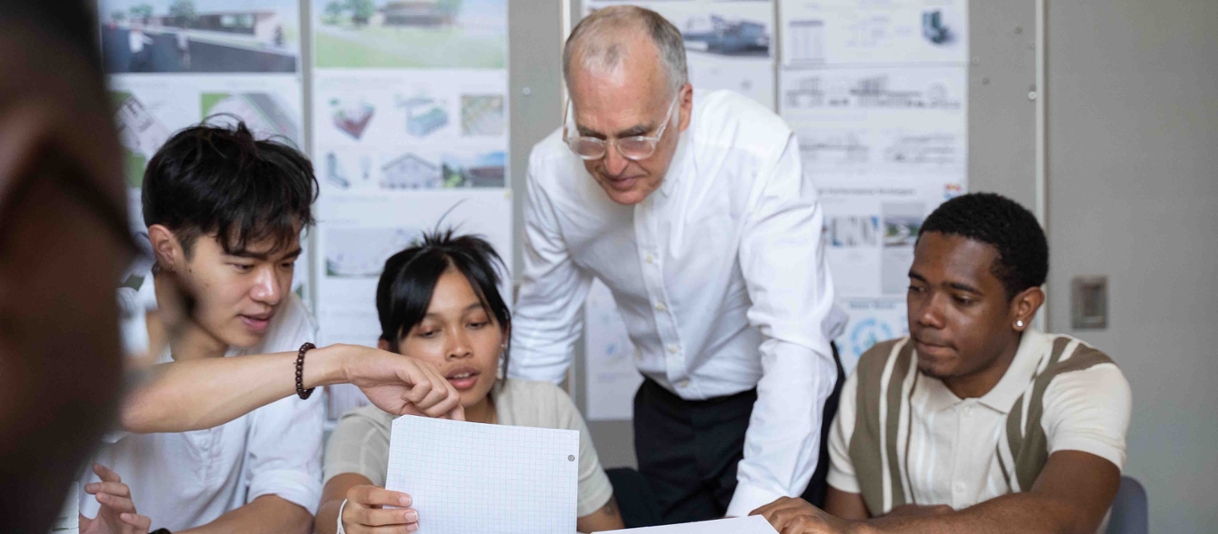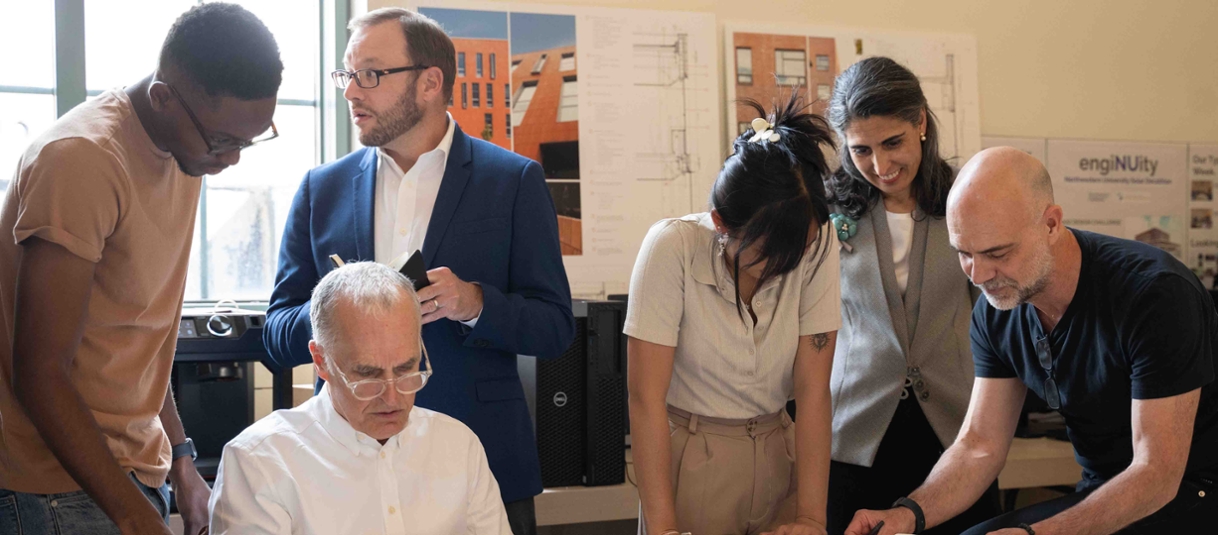Architectural Engineering & Design (AED) Program Undergoes Exciting New Changes
The Architectural Engineering & Design (AED) minor is undergoing a series of exciting changes ahead of the new year.
 As the program director, Giorgia Chinazzo is looking to foster the growth of both the newly redesigned program and the students it attracts.
As the program director, Giorgia Chinazzo is looking to foster the growth of both the newly redesigned program and the students it attracts.
"My primary goal is to ensure that the AED program becomes a recognized center of excellence, producing graduates who are well-prepared for successful careers in the Architectural, Engineering, and Construction (AEC) sector and equipped to make a positive impact on society, the environment, and the industry,” Chinazzo said.
Minoring in AED can significantly increase an engineering student’s chance of securing internships, jobs, or future educational opportunities, Chinazzo said.
“AED encourages creative thinking and problem-solving, allowing students to explore novel approaches to design challenges and understand a “design language” that can be used in different fields,” she said. “Graduates with an AED minor can pursue careers in architecture firms, engineering companies, urban planning agencies, construction management, and more.”

To keep up in a competitive field, the AED minor will change dramatically through curriculum expansion, evaluation and revision, continuous engagement with industry leaders, organizations, and professionals, and through the development of research initiatives among faculty and students. This minor seeks to offer a holistic and forward-looking education focused on innovation, creativity, and experiential learning opportunities.
Some of the key changes include:
- A stronger emphasis on sustainability, environment and equity and justice including the introduction of new courses and a stronger focus within the existing courses on green building practices, sustainable design principles, the application of renewable energy technologies in architecture and engineering, and the impact of the built environment on the society.
- New courses that cover relevant topics (i.e., “Building Enclosure” and “Indoor Air Quality”) and address the interdisciplinary nature of the field. In addition, new courses offered by the Art History Department have been approved to expand the “Architecture History” section of the minor.
- Flexible elective options.
- More guest lectures, workshops, and networking events will be organized in the context of the AED Seminar to connect students with professionals to offer insights into current industry practices.
- An increase of projects and assignments that encourage interdisciplinary teamwork will be incorporated into the curriculum.
- The incorporation of classes on Building Information Modeling (BIM) tools, parametric design, and other innovative technologies and software.
These changes reflect the fusion of creativity, technology, and society that is architecture, Chinazzo said.
“The process of conceptualizing a building or structure from scratch and seeing it come to life involves a blend of artistry, problem-solving, and technical, and social expertise,” she said. “From considering a site's cultural and historical context to incorporating sustainable design principles, architecture demands a comprehensive approach that must always keep the environment and the end-users in mind. It is the perfect canvas where creativity and technical skills intersect to shape the way people experience and interact with their surroundings.”
Architecture is not only about aesthetics: It provides an opportunity to leave a positive mark on society.
“The potential to make a positive impact on people's lives and the environment by translating abstract ideas into tangible designs, while considering cultural, environmental, and human factors is what truly excites me about architecture,” she said. “Whether it is designing sustainable and energy-efficient buildings, revitalizing urban areas, or creating spaces that foster social interactions, architects play a vital role in shaping a better future.”
The role of the architect is more than that of a designer, she said.
“Architects, in fact, have the power to envision spaces that not only serve practical purposes but also evoke emotions, shape behaviors, and create lasting impressions,” she said.
The success of this program is, in part, due to its collaboration with industry professionals.
“Having AED courses taught by practicing architectural and engineering professionals brings significant advantages and benefits to the learning experience,” Chinazzo said. “Professionals bring real-world experience and firsthand knowledge of current industry practices to the classroom. They can bridge the gap between theory and application, providing students with practical insights and examples that are relevant to the present architectural landscape.”

An architectural professional’s expertise can advise and advance students long after they leave the classroom.
"By sharing their past and ongoing projects as case studies, professionals can illustrate the challenges, solutions, and decision-making processes involved in real-world architectural endeavors, enhancing students' problem-solving skills and critical thinking abilities,” Chinazzo said. "Professionals can illuminate the budgetary, regulatory, and timeline constraints that impact design decisions in real projects.”
By having practicing professionals as instructors, the AED program allows for greater opportunities to network.
“Students can establish valuable connections with industry experts, potentially leading to internships, and job opportunities in the future,” she said. “In addition, professional instructors can serve as mentors to students, providing guidance on career paths, portfolio development, and industry-specific advice.”
Industry professionals are not the only draw, either. Peter Pinder, a senior engineering major minoring in AED, said the program has allowed him to utilize and embrace technology.
"I like how the architecture minor fosters creativity and agency by developing students' ideas from concept to rendered 3-D views with practical floor plans and empathetic narratives," he said. "It really brings into fruition the idea of human-centered design and whole-brain engineering. I feel that the minor has prepared me for the future by allowing me to embrace technology to vividly illustrate complex solutions to multi-disciplinary issues in a collaborative environment with competing priorities."

